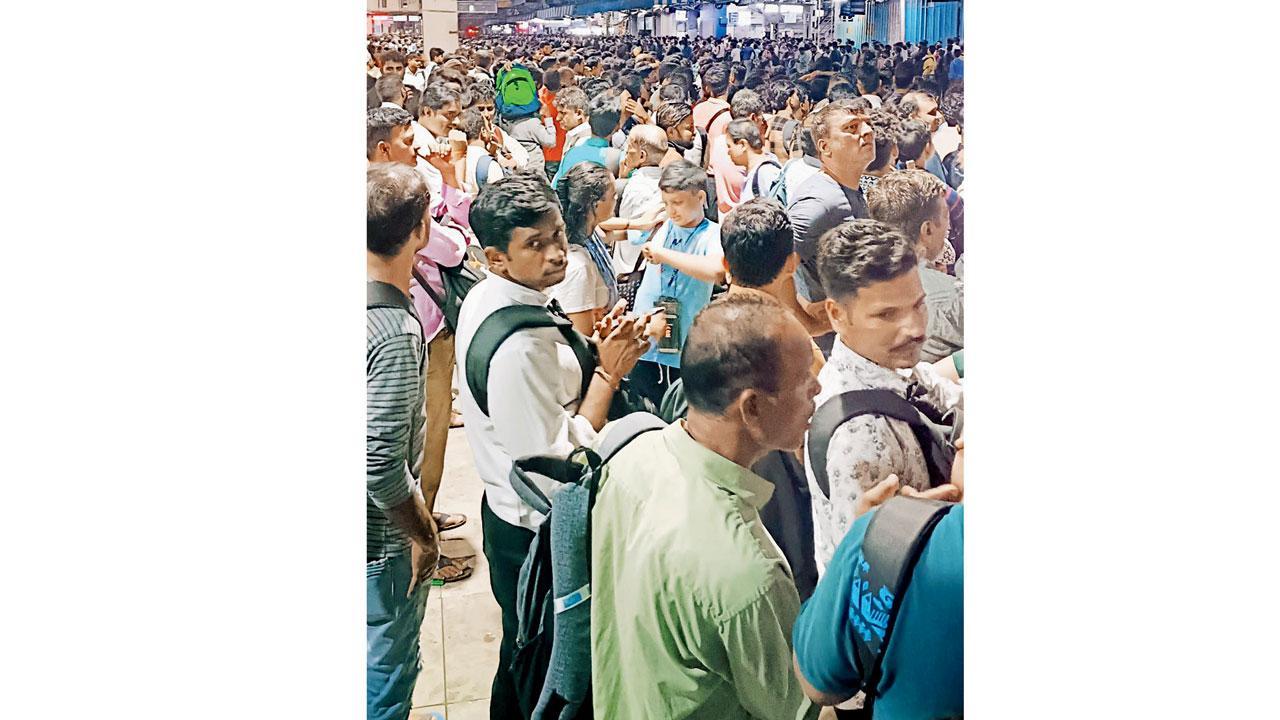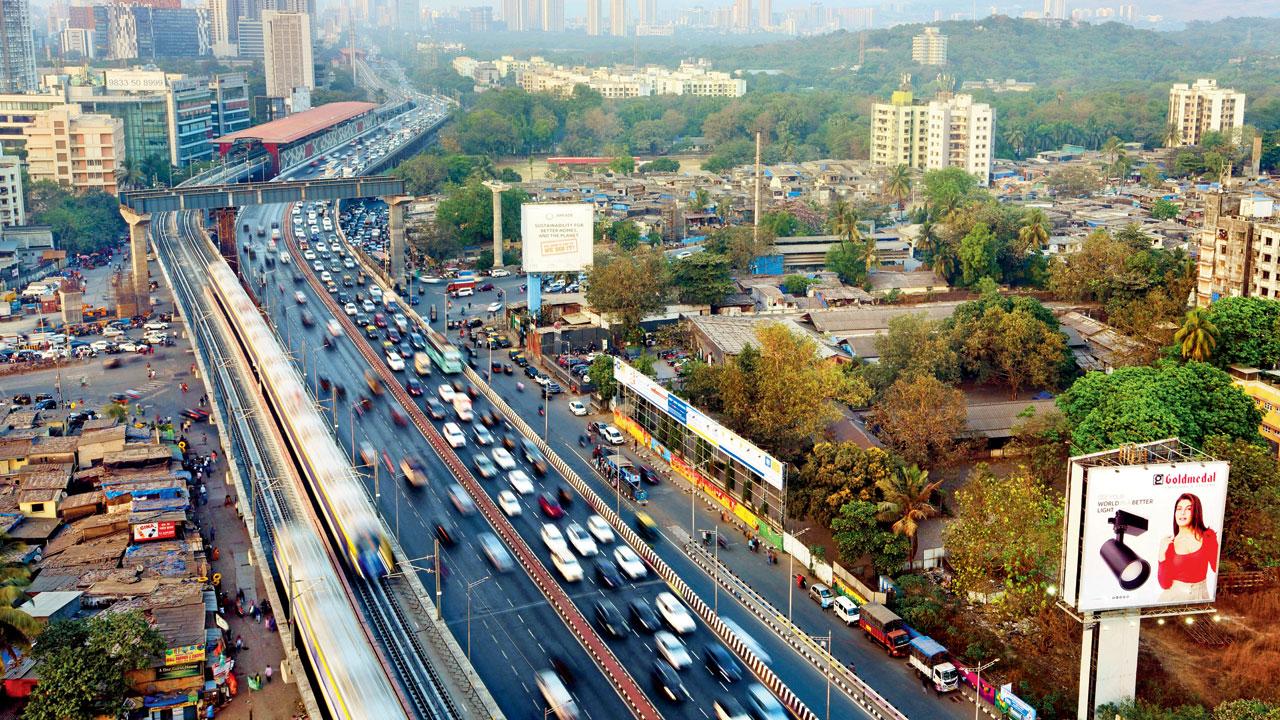Cable fault that led to massive cancellations of locals results in highest ridership for parallel Metro lines; experts call for better integration between each train station to corresponding Metro station

Borivli railway station on Tuesday. Pic/Rahil Desai
Western Railway (WR) on Tuesday faced a six-hour disruption due to a cable defect and related signalling issues, which led to the delay of 220 trains and the cancellation of 90, apart from chaos at stations. The four-month-old Red Line 7 and Yellow Line 2A, on the eastern and western sides of WR, ameliorated the situation, recording their highest-ever footfall in the process.
ADVERTISEMENT
The Metro lines, which proved their mettle on Tuesday, have a 10-12-minute train frequency. However, transport experts said a deeper kind of integration with the existing railway network, which has never been thought of, could have easily boosted the crowd count and alleviated the situation at WR stations.
MMRDA officials said there was a spike in ticketing on Tuesday and it may have been due to the WR disruption, which also means that commuters are opting for the parallel Metro corridors when the suburban network encounters failure. “On Tuesday, we registered the highest-ever ridership, 1,95,663, and the highest number of trips in one day, 64,923, from the Mumbai One Card,” an official said.
 Red Line 7, which connects Dahisar East to Andheri East, on January 22. File Pic/Rane Ashish
Red Line 7, which connects Dahisar East to Andheri East, on January 22. File Pic/Rane Ashish
The disruption, which happened to be the biggest one on WR since the Metro networks were inaugurated in February 2023, had its genesis near Malad station at 11.45 am. WR’s team was on the job through the day and all four lines were restored one by one by the evening rush hour. In the course of the day, eight 500-metre cables worth Rs 12 crore were laid. Nearly 40 people, including senior officials, worked to put right the fault. But in these six hours, commuters faced a harrowing time at all suburban stations.
“Those who wanted to travel between Dahisar and Andheri could have easily travelled by the Metro lines. Many are still unaware as there needs to be some kind of integration via a foot overbridge, skywalks or even trans-shipment or tie-up between both the organisations for a seamless commute. Operating networks in silos will not help anyone,” a commuter said.
Prime Minister Narendra Modi had inaugurated the two Metro lines, which are worth R12,600 crore, and had taken a ride on them. During peak hours, on an average, the lines collectively see about 40,000 to 45,000 commuters in the morning and 55,000 to 60,000 in the evening, as per the Maha Mumbai Metro Operations Corporation Limited.
Jagdeep Desai, architect and transportation analyst with Forum for Improving Quality of Life in Mumbai Suburbs, said, “If there is a disruption, the railway authorities should immediately announce that passengers with valid railway tickets can use the available mode of public transport without having to buy fresh tickets. It’s another matter that bus stops or Metro stations may not be within walking distance, but the gesture would be appreciated. The sooner Metro services are started as per their planned routes, the better.”
A V Shenoy, a senior transport expert, said, “Integration amid various modes of transit will be the key to have a seamless commute for Mumbaikars when one mode of transport is down, the other one should be able to rise to the occasion.” There are eight stations on WR between Dahisar and Andheri while there are 30 on the two Metro lines between these two spots.
90
No of cancelled trains
 Subscribe today by clicking the link and stay updated with the latest news!" Click here!
Subscribe today by clicking the link and stay updated with the latest news!" Click here!







